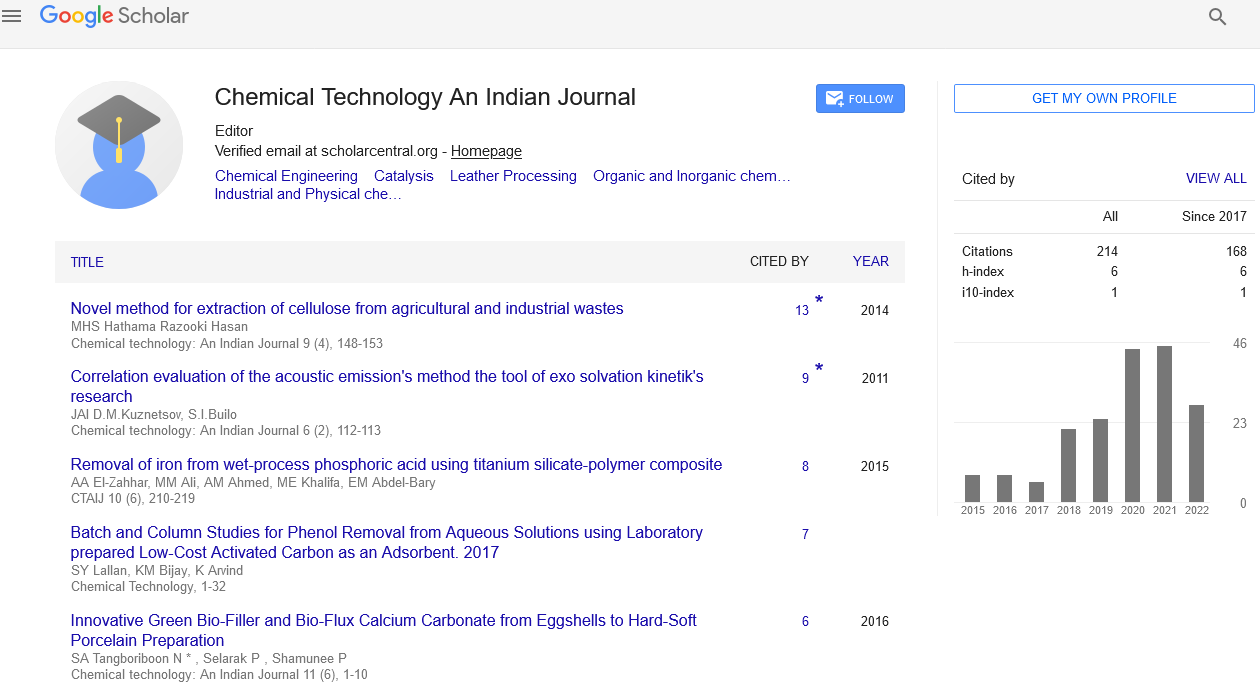Abstract
Thermodynamic and kinetic studies for the adsorption of Cd (II) using nanoparticles of Tio2 fromaqueous solution
Author(s): Parastoosadeghi, Hassan Rezaei, SeyedAliakbarHedayatiCadmium is a toxic, stable and non-biological heavy metal causing numerous adverse effects on the environment and animals. It is one of the most important primary contaminants of drinking water. The aim of this study was to evaluate the efficiency of titanium dioxide nanoparticles as adsorbent for the removal of Cd2 + from aqueous solutions. The effects of varying parameters such as pH, temperature, initial metal concentration, adsorbent dosage and contact time on the adsorption process were examined. The equilibrium adsorptiondata were analyzed using two isotherm models (Langmuir and Freundlich), two kinetics models (pseudo-first order and pseudo-second order) andthermodynamic parameters (ÄGï‚°, ÄHï‚° and ÄSï‚°). The highest uptake was observed incondition of pH = 6, absorbentamount 1 g, contact time 120 minutes, initial metal concentration 10 mg/L, and temperature 25 . The results indicate that Langmuir model provide better correlation of experimental data, and the pseudosecond order kinetic equation could better describe the adsorption kinetics of considered heavy metal. Thermodynamic parameterswere calculated and the negative value of ÄGÚ indicate the process was spontaneous, positive value of ÄHï‚° confirms the reaction to be endothermic and positive value of ÄSï‚° show that the degree of freedom increase at the solidliquid interface during the adsorption process. The shape and dimensions of adsorbents were determinedbyScanning Electron Microscope (SEM), the kind of structure and phase identification of adsorbent powders was determined by X-ray diffraction (XRD). Fourier transform infrared spectrometer (FTIR)was used to find participating functional groups in adsorption.

